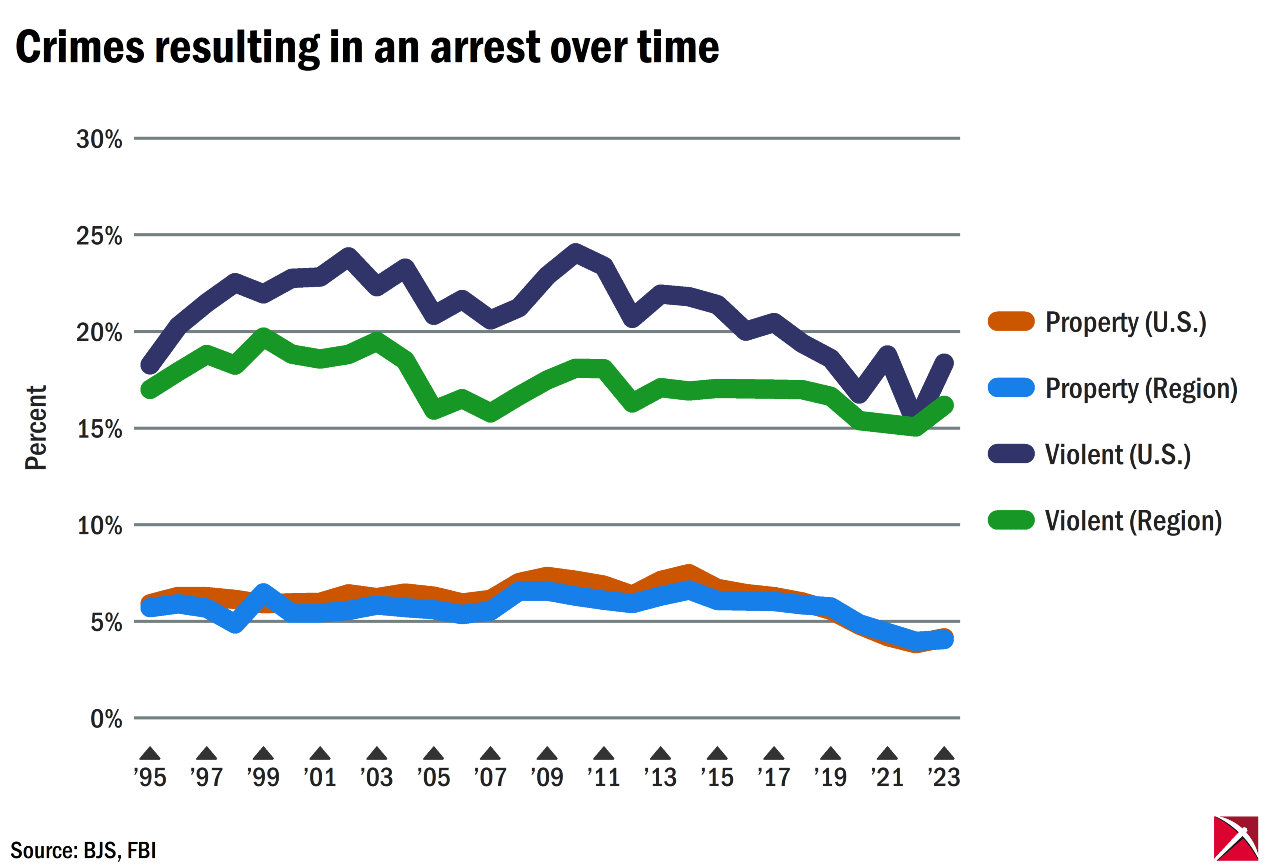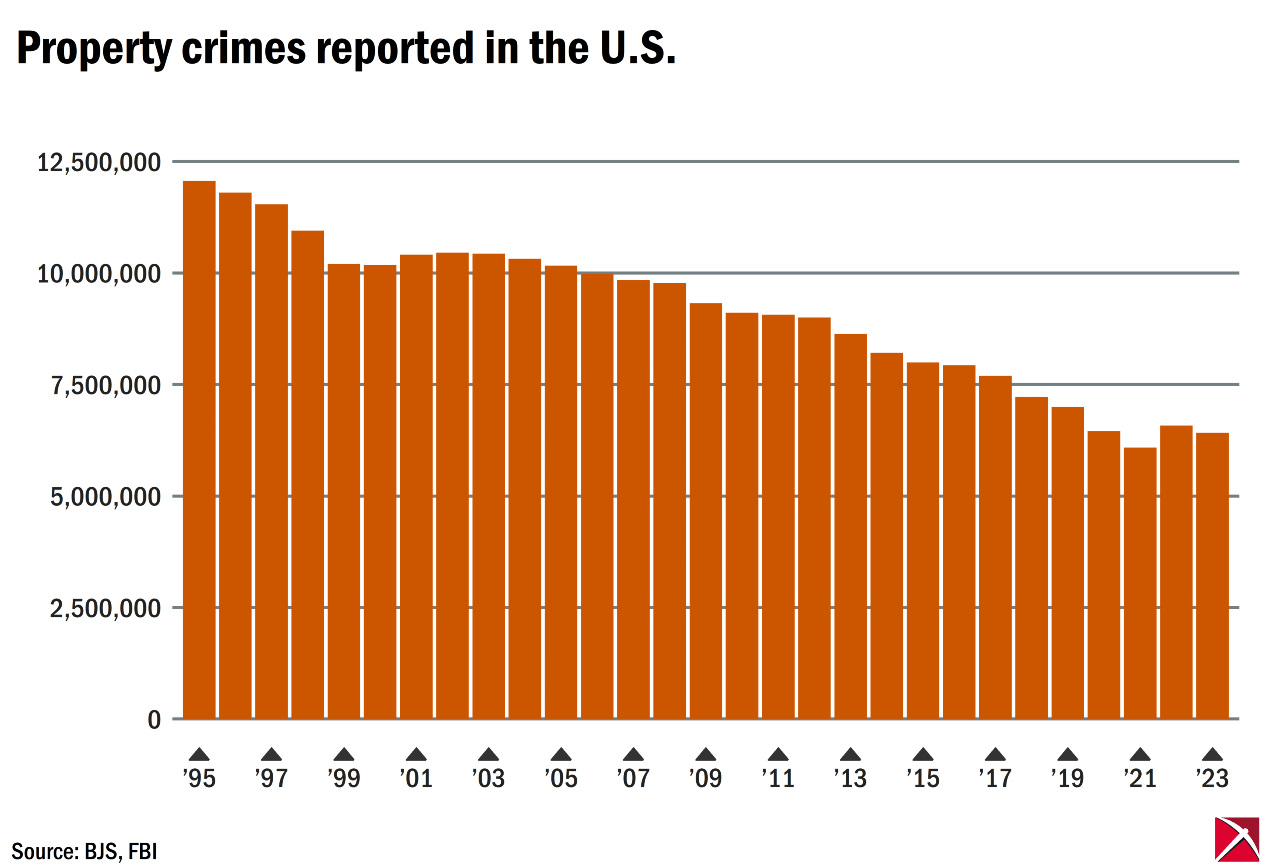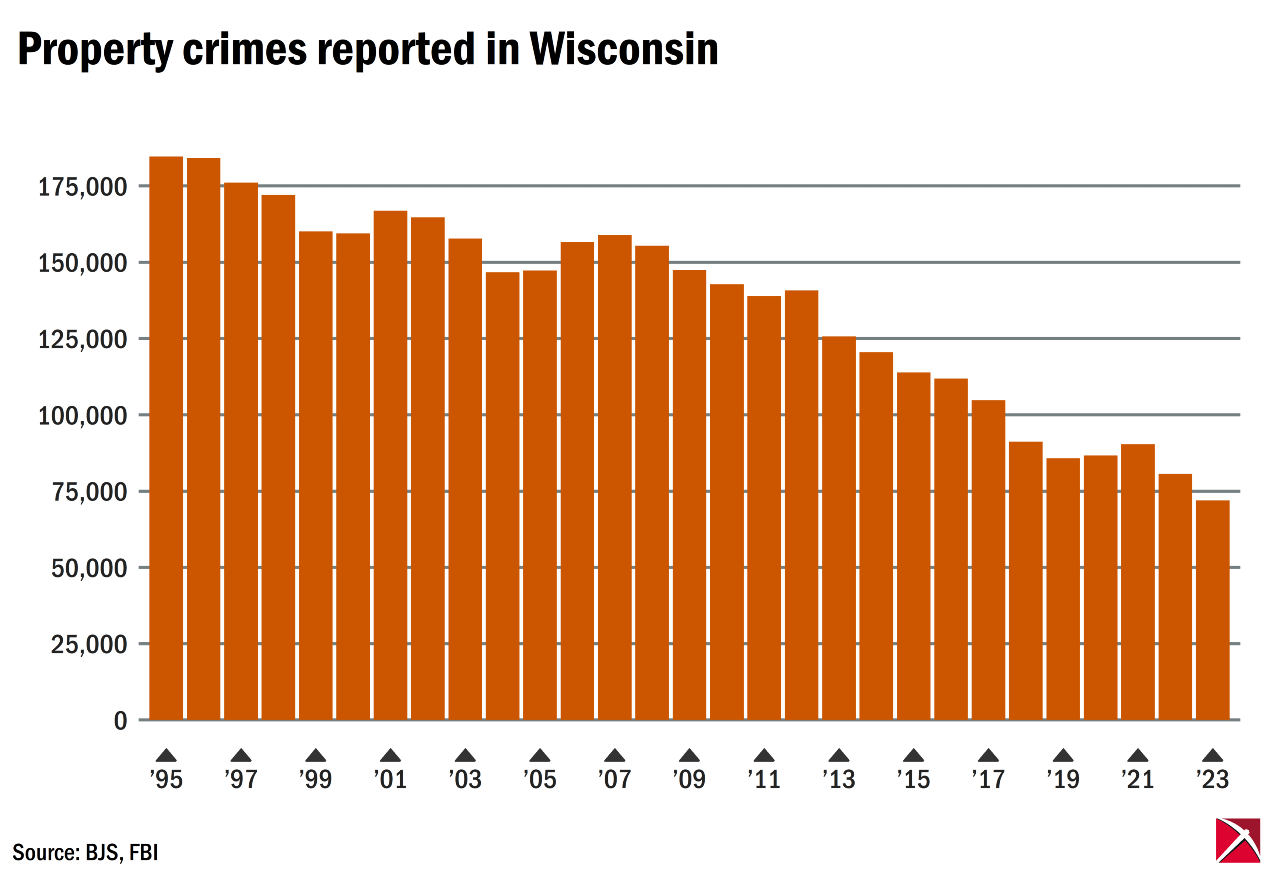In Wisconsin and neighboring states, only 16 percent of violent crimes result in arrest
An analysis of federal data reveals that only 16 percent of violent crimes in Wisconsin’s region of the country result in an arrest of a suspect, and 4 percent of property crimes result in an arrest.

This may seem at odds with the story of crime in America: In 1991, the nation saw a peak in crime, but since then, reported violent crimes have decreased by more than a quarter and property crimes by nearly half nationwide. Wisconsin differs in seeing an increase in the number of violent crimes reported since then, but it has enjoyed a drastic decline in property crime over the period.
However, since the 1990s, the nation has seen a decline in the percentage of reported crimes that result in an arrest. This, combined with the fact that the majority of crimes go unreported to authorities, has resulted in an increasing portion of crimes that never lead to an arrest.
This underappreciated fact means that justice is far from ensured and, in some place, rare in the United States.
The national status quo
The most recent national data shows that many victims never report the crimes they experience, with only 45 percent of violent crimes and 30 percent of property crimes ever being reported to police. These “reporting rates” are generally lower now than they were a decade and a half ago.
Even of crimes that are reported, an arrest occurs in only a relatively small percentage — a ratio referred to as the “clearance rate” in crime data.
Utilizing these two datasets — from the Bureau of Justice Statistics and the Federal Bureau of Investigation — and some statistical calculations reveals that approximately 4 percent of property crimes and 18 percent of violent crimes occurring in our country each year result in an arrest.1
There are better arrest outcomes in some categories of crime in terms of the percentage that result in an arrest, such as aggravated assault, at 26 percent, or, among property crimes, burglary at 6 percent. However, others show much worse outcomes, such as robbery, at 12 percent.
Given the available data provided by all governments, we cannot directly calculate similar rates for the Badger State, but we can for its region.
A recent report shows that the victims in the Census Bureau’s east north central region — which includes Wisconsin, Illinois, Indiana, Michigan, and Ohio — are generally equally or slightly less willing to report the property and violent crimes they experience to police.2 Victims specifically reported 37 percent of violent crimes and 32 percent of property crimes to police, according to FBI data.
The east north central region also has significantly lower clearance rates — 36 percent for violent crime and 12.5 percent for property crime – than the national results.
Combining these reporting and clearance rates, then, means that approximately 16 percent of violent crimes in Wisconsin’s region result in an arrest of a suspect and 4 percent of property crimes result in an arrest.
Trends show things are getting worse over time
As noted, crime rates have declined dramatically across the country since the 1990s — but so has the actual number of crimes reported to authorities. Nationally, the number of reported violent crimes in America has declined 30 percent, and the decline in reported property crime is even more significant at 47 percent.
This does not mean that a larger portion of crimes are being solved than before the decline. In fact, the percentage of crimes that result in an arrest is at its lowest point since 1995 for both property and violent crime. A continuous decline in the clearance rate for reported crimes primarily drives most of this change, but there has also been a slight change in the rate at which victims report crimes that they experience.
Zooming in on Wisconsin, we see the number of reported property crimes has decreased by more than 60 percent, while the number of reported violent crimes has increased by 18 percent.3 (Wisconsin is the only state in the east north central region to have seen a rise in violent crime since 1995.) Even in the face of increasing numbers of violent crimes, the overall number of crimes in the state is down, because property crimes greatly outnumber violent crimes.
Still, the effectiveness of our criminal justice system has not improved in Wisconsin’s region.
Instead, we see that the percentage of crimes occurring that result in an arrest — that is, the combined effect of the reporting rate and the clearance rate — has declined both for violent crimes (down 5 percent) and property crimes (down 29 percent) in Wisconsin’s region. Figure 2 illustrates this downward trend. It also shows that this region significantly underperforms the national average in terms of the number of violent crimes resulting in an arrest.
The decrease in the percentage of crimes resulting in an arrest, even as crime rates have fallen, reveals a concerning reality: Justice was not assured and is becoming even less so nationally and in Wisconsin’s part of the country. Many victims do not report the crimes they experience, and even when they do, the likelihood of an arrest is low.
It is crucial to address these issues to ensure that justice is served and to restore public confidence in the criminal justice system.
Jeremiah Mosteller is an attorney and criminal justice policy expert who serves as a policy director at Americans for Prosperity and a visiting fellow at the Badger Institute.
Any use or reproduction of Badger Institute articles or photographs requires prior written permission. To request permission to post articles on a website or print copies for distribution, contact Badger Institute Marketing Director Matt Erdman at matt@badgerinstitute.org.
Submit a comment
1 Note: Combining these two figures does cause substantial statistical noise so they should be viewed only as a good faith estimate.
2 The Federal Bureau of Investigation utilizes these same regions for its crime data and regional clearance rate calculations.
3 The violent crime rate increased by a much lower 3 percent, which suggests that the raw totals are primarily driven by the state’s 15 percent population growth.











